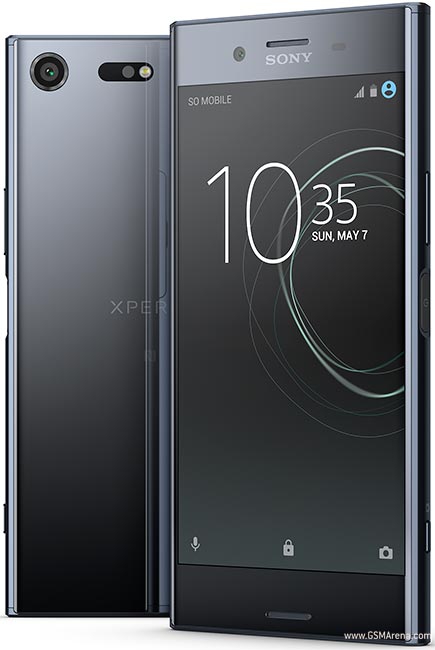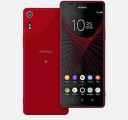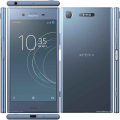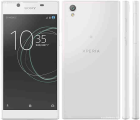Sony Xperia XZ Premium 64 GB Prices
Important Note.
- All prices are in Pakistani Rupee (PKR)
- Prices may vary at stores and our effort will be to provide you with the updated prices.
- The latest price of Sony Xperia XZ Premium 64 GB was obtained on 17 مئی, 2019. The prices at the original stores had been updated on the respective mentioned dates.
- Find out WhatMobile price has dropped in Pakistan by selecting Notify Price Drop button
- Find out WhatMobile has better specifications by clicking Add To Compare Button find out what Mobile has better reviews by visiting our reviews section
- Find out WhatMobile is cheaper on which retailer by clicking Compare prices from retailers button
Search Terms
- Sony Xperia XZ Premium 64 GB
Specifications
| GENERAL | |
| 2G Network | GSM 850 / 900 / 1800 / 1900 - SIM 1 & SIM 2 (dual-SIM model only) |
|---|---|
| 3G Network | HSDPA 800 / 850 / 900 / 1700(AWS) / 1900 / 2100 |
| 4G Network | LTE |
| Sim | Single SIM (Nano-SIM) or Dual SIM (Nano-SIM, dual stand-by) - IP68 certified - dust/water proof over 1.5 meter and 30 minutes |
| Announced | 26/02/2017 |
| Status | Coming soon. Exp. release 2017, Q2 |
| BODY | |
| Dimensions | 156 x 77 x 7.9 mm (6.14 x 3.03 x 0.31 in) |
| Weight | 195 g (6.88 oz) |
| DISPLAY | |
| Display Size | 5.5 inches (~69.4% screen-to-body ratio) |
| Resolution | 3840 x 2160 pixels (~801 ppi pixel density) |
| MultiTouch | Yes, up to 10 fingers |
| Protection | Corning Gorilla Glass 5 - Triluminos display - X-Reality Engine |
| SOUND | |
| AlertTypes | Vibration; MP3, WAV ringtones |
| LoudSpeaker | Yes, with stereo speakers |
| 3.5mm jack | Yes - 24-bit/192kHz audio - Active noise cancellation with dedicated mic |
| MEMORY | |
| CardSlot | microSD, up to 256 GB |
| Internal | 64 GB, 4 GB RAM |
| DATA | |
| GPRS | Yes |
| EDGE | Yes |
| Speed | HSPA 42.2/5.76 Mbps, LTE-A (2CA) Cat16 1024/150 Mbps |
| WLAN | Wi-Fi 802.11 a/b/g/n/ac, dual-band, Wi-Fi Direct, DLNA, hotspot |
| Blue Tooth | v4.2, A2DP, aptX, LE |
| NFC | Yes |
| USB | v3.1, Type-C 1.0 reversible connector; USB Host |
| CAMERA | |
| Camera Primary | 19 MP, EIS (gyro), phase detection and laser autofocus, LED flash |
| Camera Features | 1/2.3" sensor size, geo-tagging, touch focus, face detection, HDR, panorama |
| CameraVideo | 2160p@30fps, 720p@960fps |
| CameraSecondary | 13 MP, f/2.0, 22mm, 1/3" sensor size, 1.12 µm pixel size, 1080p |
| FEATURES | |
| OS | Android OS, v7.1 (Nougat) |
| CPU | Octa-core (4x2.45 GHz Kryo & 4x1.9 GHz Kryo) |
| Sensors | Fingerprint (side-mounted, region dependent), accelerometer, gyro, proximity, barometer, compass, color spectrum |
| Messaging | SMS (threaded view), MMS, Email, IM, Push Email |
| Browser | HTML5 |
| Radio | No |
| GPS | Yes, with A-GPS, GLONASS/ BDS (region dependent) |
| Java | No |
| Colors | Luminous Chrome, Deepsea Black |
| Others | - Fast battery charging (Quick Charge 3.0) - Xvid/MP4/H.265 player - MP3/eAAC+/WAV/Flac player - Document viewer - Photo/video editor |
| BATTERY | |
| Battery | Non-removable Li-Ion 3230 mAh battery |
| MISC | |
Reviews
18/04/2017 - 1:49pm

Without a doubt the most anticipated Android flagship this year was the Samsung Galaxy S8. Samsung flagships are always a big deal, as the firm pretty much leads the way when it comes to the Android space; the Galaxy S series is highly regarded, it's typically stuffed with high-end tech and bold new features, as well as having premium-level design. What's more, Samsung wanted to make up for lost revenue and reputation from the Galaxy Note 7 debacle.
But Samsung isn’t the only company putting out awesome flagships this year. Not long ago, at MWC 2017, Sony released its Xperia XZ Premium flagship, which is lining up as one of the best handsets it has produced in years.
Each phone has its own strengths, but which is better and which should you get? Read on to find out!
Sony Xperia XZ Premium vs Samsung Galaxy S8: Specs
Here’s the specs for the Sony Xperia XZ Premium:
- Display: 5.5in display with a 3840 x 2160 pixel resolution at 807 ppi
- Dimensions: 156 x 77 x 7.9 mm
- Weight: 195 grams
- Storage: 64GB, plus support for microSD cards up to 256GB
- Memory: 4 GB RAM
- Processors: Qualcomm Snapdragon 835 2.4GHz 64-bit Octa-core processor
- Front camera: 13 MP
- Rear camera: 19 MP
- Battery life: 3230 mAh
- Colors: Luminous Chrome or Deepsea Black
And here’s the specs for the Samsung Galaxy S8:
- Display: 5.8in (Galaxy S8) & 6.2in (Galaxy S8 Plus) Quad HD+ Super AMOLED, 2960 x 1440 pixel resolution at 570 ppi and 529 ppi, respectively
- Dimensions: 148.9 x 68.1 x 8.0 mm (S8) and 159.5 x 73.4 x 8.1 mm (S8+)
- Weight: 155 grams (S8) and 173 (S8+)
- Storage: 64GB, plus support for microSD cards up to 256GB
- Memory: 4 GB RAM
- Processors: Qualcomm Snapdragon 835 2.4GHz 64-bit Octa-core processor OR Samsung Exynos 8995 Octa-core CPU - region dependent
- Front camera: 8MP with autofocus
- Rear camera: 12 MP
- Battery life: 3000 mAh
- Colors: Midnight Black, Orchid Gray, Coral Blue, Arctic Silver, or Maple Gold
Both phones come in 64GB storage options–and only 64GB storage options. While some other devices of their ilk do have more built in storage, you’re not up the creek without a paddle. If 64GB isn’t enough for you, both handsets also support storage expansion via the microSD card slot, up to 256GB in size.
When it comes to RAM, 4GB is what you get with either phone, no matter what storage size (the 6GB RAM Galaxy S8 is a China exclusive, sadly). As for processors, the XZ features Qualcomm’s latest Snapdragon 835 2.4GHz 64-bit Octa-core processor. That’s the exact same processor in the new S8 and S8+, although this is depending on the region you buy your Samsung handset in. Some regions will get the equally powerful Samsung Exynos 8995 Octa-core CPU. In either case, expect both phones to be matched pretty evenly on the processor front.
In the battery deparment, the XZ technically has a slightly larger battery at 3230 mAh versus the S8’s 3000 mAh battery. Still, expect virtually the same battery life for each device, since the differences in battery size are minuscule and they both need to power the massive screens of each phone.
Sony Xperia XZ Premium vs Samsung Galaxy S8: Design & Build
I’ve said it before and I’ll say it again: I’m a HUGE fan of the XZ with its premium glass loop surface; this creates a mirror effect which reflects the world around you.
It is a refreshing design change from the normal matte and brushed aluminum slate designs most phone have nowadays. Now, with that being said, the Galaxy S8 looks beautiful as well thanks to its bezel-free design and display which subtly wraps around the edges. Really, it’s too close to call a winner in the design department.
As for physical size, the Galaxy S8 and Galaxy S8+ are just a hair (that’s 0.1 and 0.2mm) thicker than the Sony Xperia XZ. But the Xperia XZ is much wider than either the Galaxy S8 or Galaxy S8+, which gives the win to Samsung considering both the displays on those phones are significantly larger than the Xperia XZ’s.
Sony Xperia XZ Premium vs Samsung Galaxy S8: Display
When we get to the display itself, the XZ wins hands down on specs alone. It’s not even a fight in this department. The Sony Xperia XZ Premium has a gorgeous 5.5in 4K display with a 3840 x 2160 pixel resolution at a staggeringly sharp 807 ppi. That’s compared to the Galaxy S8’s 5.8in display with 2880×1440-pixels at 570 ppi and the Galaxy S8+’s 6.2in display at 529 ppi.
However, there is one thing to consider here; display tech. Sony has some pretty amazing display technology, to be sure, but it's still based on old school IPS LCD.
Samsung, meanwhile, has gone from strength-to-strength in recent years with its phenomenal mastery of Super AMOLED. Last year, with the Galaxy S7 series, a report from screen analysis experts DisplayMate showed that, on ever measurable metric, Samsung's display was the best on the market. Period. It had richer colour, better contrast, deeper blacks, better brightness and more.
Well... DisplayMate is back with another detailed report on Samsung’s new OLED panels used inside the Galaxy S8 and Galaxy S8 Plus. Last year, you will remember they did the same thing with the Galaxy S7, declaring it the best smartphone display they had ever tested.
This year’s Galaxy S8 takes things several steps farther and has, once again, been labeled the best smartphone display in the business. The Galaxy S8, according to DisplayMate, set a number of records, which are as follows:
- Largest native colour gamut – 113% of the DCI-P3 motion picture standard and 142% of the sRGB / Rec. 709 standard
- Highest peak brightness – 1,020 nits
- Unparalleled screen reflectance
“Since 2013 the Display Power Efficiency of the Galaxy series of Smartphones has improved by a very impressive 56%,” noted DisplayMate. “This year the new OLED materials on the Galaxy S8 have improved optical and power efficiency with its larger Native Color Gamut than on the Galaxy S7 (142% compared to 131% for sRGB / Rec.709).”
So, yes, while the Xperia XZ has a 4K panel the actual overall quality of the display inside the Galaxy S8 is arguably better with optimal performance in nearly all testing criteria.
No wonder Apple’s switching to Samsung’s OLED panels in 2017.
However, we do say 'arguably' because there is plenty of missing info here. Case in point, DisplayMate's testing portfolio isn't the most extensive or up-to-date even if its testing methods are the best in the business. For example, since the firm declared the Galaxy S7's display "Best" on the market in 2016, it has only tested the iPhone 7 series, the Google Pixel, and the ill-fated Galaxy Note 7. Other recent releases from HTC, OnePlus, Huawei, and indeed Sony, are nowhere to be found.
In short, the empirical data used to declare the Galaxy S8 display "Best" doesn't exist for the Sony Xperia XZ or many other competing flagships simply because DisplayMate hasn't tested them yet...and we have no idea if it intends to.
Sony Xperia XZ Premium vs Samsung Galaxy S8: Cameras
Now on the camera front, each phone actually wins. The Xperia XZ has the better rear camera, with a 19MP lens versus the 12MP found on the S8 and S8+. However, though the Xperia XZ also has the better sensor in the front selfie camera (13MP versus the Galaxy’s 8MP), the Galaxy wins here because the front selfie camera includes autofocus–a first for smartphones.
Sony Xperia XZ Premium vs Samsung Galaxy S8: Verdict
It’s a tough, tough call. In many ways the Sony Xperia XZ Premium wins: it’s got the superior display by far and the better rear camera. The design is also refreshing.
But the Samsung Galaxy S8 is incredibly compelling thanks to its refreshing bezel-less design as well. I also really like the autofocus feature of the front selfie camera. So which to choose?
There’s no easy call here. Both phones are gorgeous and have similar specs (outside of the display). So perhaps let's base our choice on vanity. Do you take a lot of selfies? Get the S8 because of its front camera autofocus feature. But if you like photographing others, grab the XZ because of its massive 19MP rear camera.
Write Your Own Review
My Recent Reviews
- Be first to post review for this product.
comments powered by Disqus




























